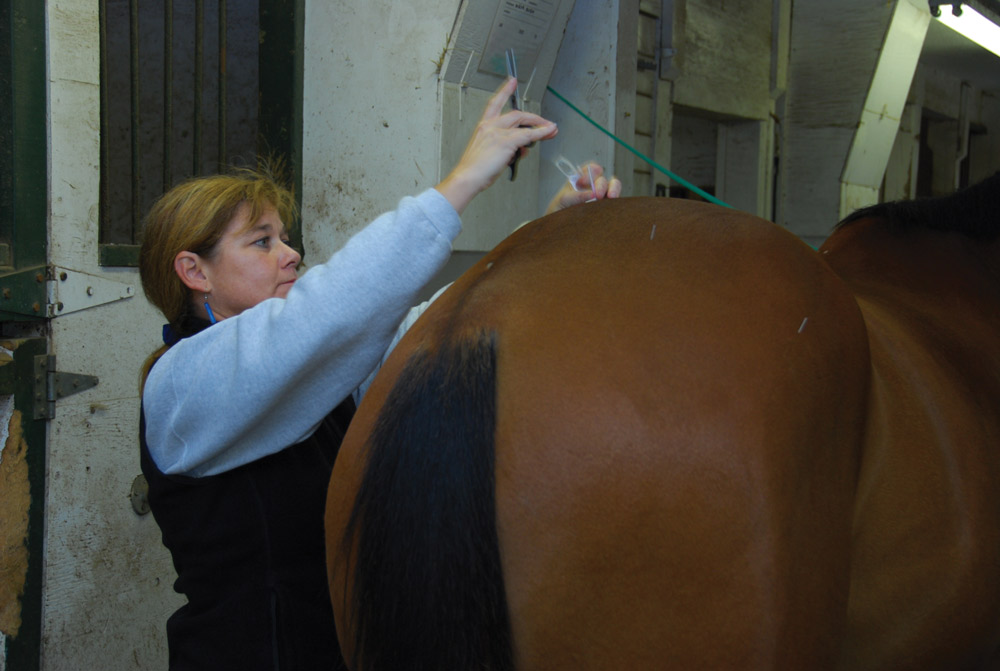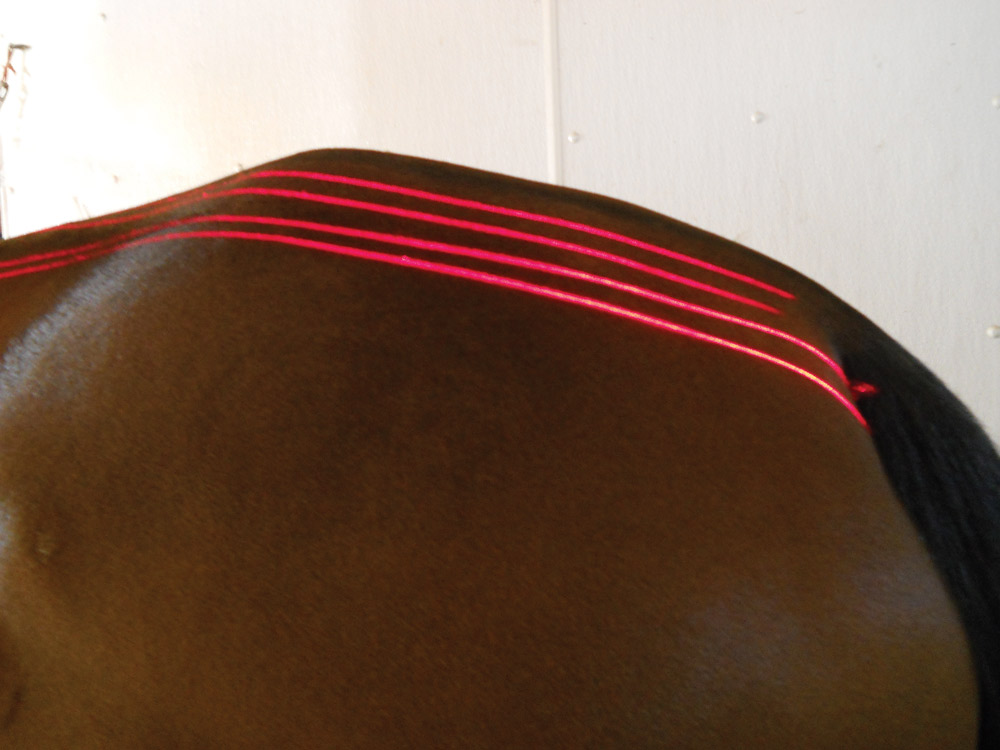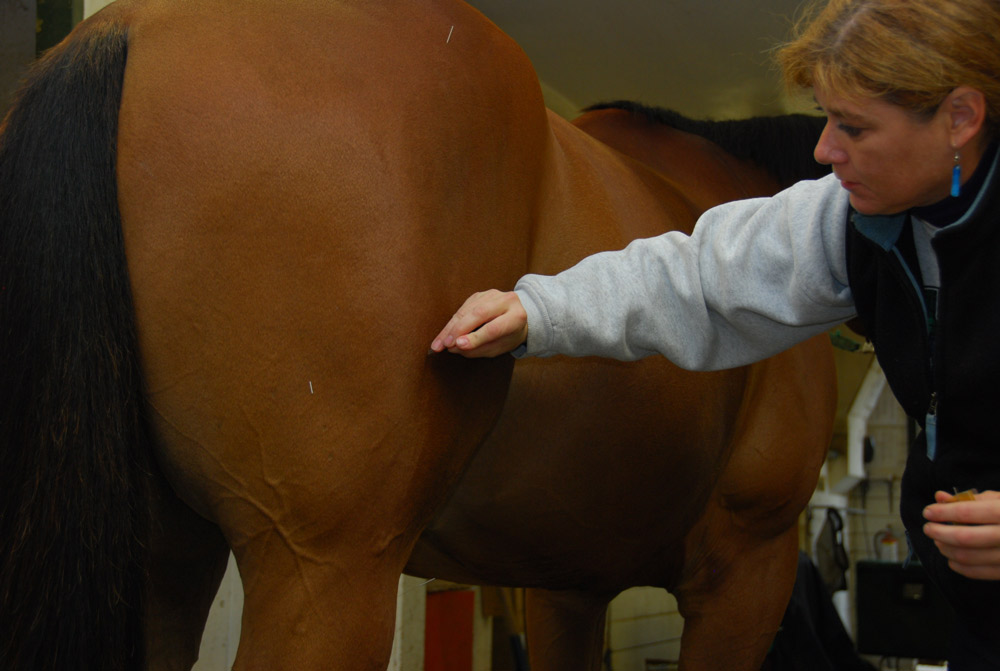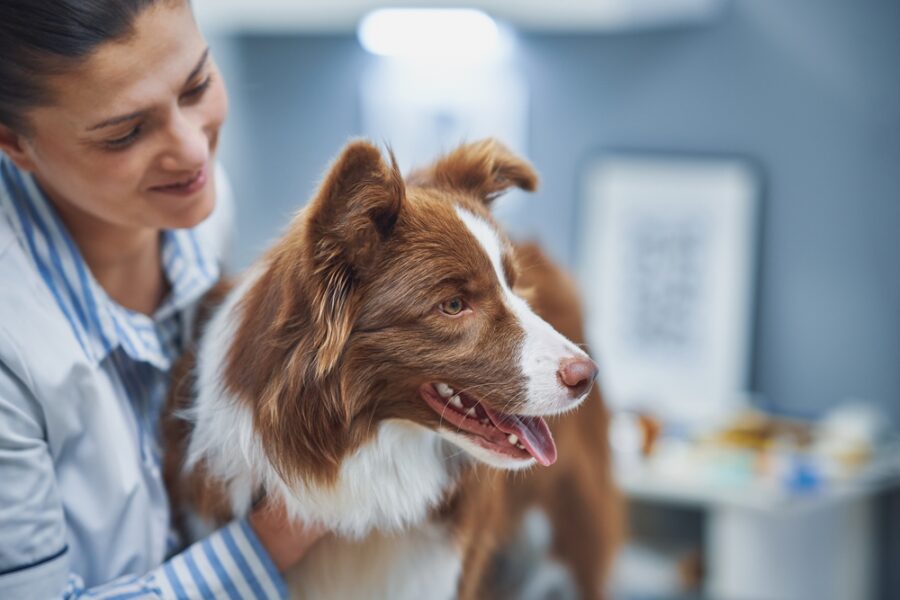A complementary approach to hunter’s bump or SIJC injuries.
Hunter’s bump is a commonly heard term in the barn. It refers to the subluxation of one or both sacroiliac joints (SI). You may have noticed this before when you look at a particular horse’s croup and see a visible bump or “point”. SI ligaments and the tendinous attachment of muscles to the pelvis and sacrum make up the sacroiliac joint complex (SIJC). When a dislocation of the articulation between the vertebral column and the pelvis occurs, the tuber sacrale (near the loin/croup junction) is pushed upward and forward because of torn ligament attachments. This prominence of the tuber sacrale, or “hunter’s bump”, may develop if one or both SI joints are displaced.
How Does It Happen?
Horses can injure their SIJC by falling, becoming cast or through a host of other traumatic occurrences. Excessive strain during training or competition, repetitive stress and lack of fitness can lead to SIJC injury. Damage can also occur secondary to saddle fit, dental issues and hoof or rider balance problems. These injuries are common in many disciplines and horse breeds such as hunters, jumpers, Standardbred trotters and dressage and reining horses.
Symptoms and Diagnostics
The clinical signs of SIJC syndrome (SIJCS) include stiffness, lameness, sciatica, tight hamstring muscles and pain in the hindquarters. A poor quality canter, unwillingness to work on the bit, and refusing to jump are common complaints from trainers with horses who have SIJCS. Local palpation can reveal mild to severe pain over the SI joint and surrounding muscles. Symptoms of SIJCS can range from a mild shortening of the stride, limitations in hind limb or back movement, and reluctance to jump, to muscle spasms and debilitating pain upon palpation.
Diagnosis can be made by palpation, a lameness examination, diagnostic acupuncture, and chiropractic assessment. Imaging including ultrasound, bone scans (scintigraphy) and MRI can identify whether changes in the soft tissues are involved in the injury, so radiographs or x-rays are usually not considered necessary.
The Importance of Proper Rehabilitation
Acute injury is usually treated with rest and anti-inflammatories. The first time a horse exhibits symptoms of SIJCS, bute and a few days or weeks off are typically recommended. Unfortunately, because many of the signs and symptoms are similar to other more minor injuries, many horse owners and trainers resume exercise too soon or too hard. When put back to work, many horses with a SIJC injury will not perform as well as they did prior to their injury. These horses are said to be “off”, “not quite right” or even “naughty”. If the injury is not rehabilitated properly, the damage to muscles, tendons and ligaments does not resolve completely and can cause pain or other issues due to compensation. Proper diagnosis, treatment and rehabilitation are all important aspects of SIJCS.
Complementary Therapies

Acupuncture
Acupuncture is an excellent treatment modality for SIJCS. It helps with pain and relaxation of the muscles and ligaments involved. Trigger point therapy, as well as needling specific acupuncture points, can reduce in flammation and assist in the reduction of subluxations. Dry needles, aquapuncture (injecting vitamin B12, saline or other medications into specific acupuncture points) and/or electrostimulation can help reach the deep muscles acting on the pelvis. Relaxation, negative pattern interruption, restoration of proper energy ow and muscle stimulation can be achieved with these therapies.
Chiropractic
Reducing SI subluxations with chiropractic techniques can be accomplished in several ways. Adjustments can be made directly using the physical skill of the chiropractor, or indirectly using a small impacting device called an activator. Adjustments may vary in the amount of force applied or the type of stabilization given to the vertebral segments during the adjustment. As an adjustment is designed to affect one motor unit at a time, your horse may need several treatments to correct SIJC dysfunction.
Cold laser therapy

Cold Laser Therapy/Veterinary Low Level Laser Therapy (VLLLT) is, in my opinion, the “icing on the cake” when treating SI injuries. As discussed in a previous article concerning tendon and ligament injuries, VLLLT stimulates healing at the cellular level. Light Amplification by Stimulated Emission Rays, or LASER, is a highly concentrated coherent light, which restores health to ailing cells of the tendons, ligaments, muscles and fibroblasts of the SIJC. Laser therapy will be directed at the site of injury as well as the brain, poll and neck to balance the whole horse.
When VLLLT is used in conjunction with chiropractic and acupuncture, pain can be alleviated and eventually the hunter’s bump or prominence can be reduced or virtually eliminated. After multiple adjustments and treatments, horses can return to their original function and top-level competition. Laser works to stimulate healing while reducing pain, inflammation and scar tissue, decreasing the chance of re-injury.
The Rehabilitation Process
After treatments, rehabilitation and conditioning are key to a full recovery. Massage, physical therapy and routine stretching will help maintain SIJCS patients. Effective warm-up rides and symmetrical workouts are important to prevent future injury. Avoiding fatigue, keeping the horse and rider’s weight moderate, and adequate muscle conditioning are keys to preventing stress. Exercising over poles, cavalettis and gentle hills all help strengthen the SIJC.
As any horse owner knows, preventing injury due to accidents can be dif ficult. Avoiding slick surfaces and keeping paddocks free of holes and rocks may help keep your horse safe. Large stalls with adequate bedding can prevent casting and damage while horses are rolling. But more important is keeping your horse’s posture, strength and fitness correct. Good riding technique, balanced feet and well- fitting equipment including saddle fit, girth, bridle and bit comfort are keys to success. Any piece of equipment can cause rubbing, chafing or pain, which can then alter the way your horse moves. Compensation due to ill- fitting equipment can injure and/or prevent adequate healing.
Many times, there are underlying causes of SIJCS. Veterinarians may need to address hock, sti fle, neck, poll or leg injuries to maintain proper alignment of the spine. If these areas were not addressed previously, and treatments are not alleviating the symptoms, then a complete lameness examination should be scheduled. This may include flexions, radiographs, ultrasound or MRI to eliminate any potential causes of injury. Very often there may be front limb lameness that causes a hind limb to compensate, therefore causing spinal subluxation and pain. If you feel your horse has SIJCS you should contact your veterinarian to set up a consultation. When VLLLT is used in conjunction with chiropractics and acupuncture, pain can be alleviated and eventually the hunter’s bump or prominence can be reduced or virtually eliminated.
Jill Todd, dvm, has a mobile equine integrative complementary medicine practice based out of Bellevue, Washington, and also practices at Bellevue Animal Hospital for Dogs and Cats. She is a rider, and competing in hunter/jumper and equitation over fences is one of her passions. Dr. Todd was the faculty advisor for the Texas State University Rodeo Team. She is also a certified veterinary acupuncturist (cva), and a certified veterinary chiropractitioner (cvcp). Her main tools are the erchonia pl5 cold laser, vom activator, and acupuncture needles. Dr. Todd feels that the use of these tools and other alternative medicine techniques, along with her horsemanship knowledge, makes her unique in the veterinary medical field. jilltodddvm@gmail.com, erchonia.com or jilltodddvm.com.








